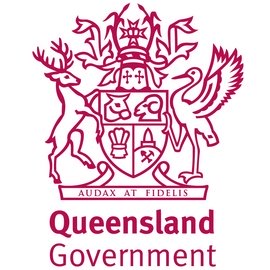It’s a critical question. The answer: there’s a lot of focus on ‘evidence-based practice’, but a lot less attention on what that really means; making it hard to guarantee best practice is common practice.
New CIS research shows the way forward is to develop a better understanding of the ‘science of learning’ – the connection between:
- Insights from cognitive science and educational psychology about how students learn, and;
- The teaching practices supported (and not supported) by those insights.
If teachers and leaders can develop a strong understanding of the science of learning, it can provide a framework against which to assess practices and inform how we teach – rather than the current grab-bag of practices all bearing the label ‘evidence-based’.
First, it’s crucial to start with the science of how we learn. While humans have evolved for some learning to occur naturally (such as speaking one’s native language), other learning needs to occur in a systematic and explicit way (such as like learning to read, write, do maths and most of the other things taught in schools).
This is referred to as ‘biologically secondary knowledge’. Instead of being able to think critically and creatively or problem-solve as a transferable skill, these higher-order skills are the product of deep knowledge of different domains. We need knowledge to think with.
In addition, human memory plays a critical role in learning. Working memory – what is active in our mental workspace at any one time –is limited.
The only way to make working memory more effective is to strengthen long-term memory. Therefore, cognitive load theory posits that instruction should be designed to account for these features.
All this tells us what makes learning happen. But what does it mean for teaching?
The teaching approach best supported by the evidence is explicit instruction of a well-sequenced, knowledge-focused curriculum.
Explicit instruction is not just telling and/or showing students how to do something. It is a multi-step instructional sequence that begins with careful ordering of curriculum content to create a coherent sequence, exposure to new concepts in small steps taught through modelling and worked examples, consistent student practice and checking for understanding, and regular review and practice to ensure retention.
Because working memory is limited and knowledge retained in long-term memory is crucial to making working memory more effective, students should only be expected to engage in complex tasks once they have been shown how.
Independent work, problem-solving, critical analysis and argument development become capstone teaching and learning activities – not the foundation.
To find out how this worked in real classrooms and real schools, the CIS spoke to teachers and leaders who have moved their practice more towards explicit instruction.
A commitment to education equity first spurred these teachers to change their practice.
Some students weren’t making adequate progress, and the teachers also recognised that approaches focusing on student-led learning, inquiry and discovery favoured students who already benefitted from having significant of cultural and educational capital.
Leaders were also able to create motivation for change among their teachers by emphasising the education equity benefits of explicit teaching. These insights are key to making education work for all Australian students.
However, teachers also conveyed that, despite their enthusiasm, they faced barriers such as a lack of formal support or training from the education system. This often left them dependent on informal networks of like-minded teachers.
Additionally, within the teaching profession, myths and misconceptions persisted, particularly regarding explicit instruction.
To overcome these barriers, teachers desired a clearer articulation of the science of learning that busts myths, and support across the education system to deliver outcomes in the classroom.
At a time when teaching as a profession is under scrutiny and many are feeling the effects of burnout, those who participated in our research described the sense of professional fulfilment they experienced from re-orienting their practice towards the science of learning.
One person remarked “[Using the science of learning] gives me a sense of my own intellectual purpose, I feel challenged by it. Otherwise, I don't know if I could stay in teaching, if I didn't feel like I had something that elevated me.”
But a strong sense of purpose, motivation and enthusiasm isn’t enough.
The teachers and leaders we interviewed expressed a need for stronger guidance from policy leaders about the importance of the science of learning.
They noted that while advice advocating explicit teaching was provided, it often conflicted with accompanying advice advocating student-led learning.
Therefore, implementing the science of learning at scale will require a combination of top-down (system-driven) reforms and bottom-up (school and teacher-led) actions.
Policymaker-imposed barriers must be removed and targeted strategies – such as shining a spotlight on successful schools so others can learn from them – are needed.
This approach supports schools in the areas where they need it to implement change while using the authority of the school system to guide schools on the change journey.
By creating a shared understanding of good teaching and what success looks like, systems and schools can put teachers on a path to deliver better outcomes for their students.















